
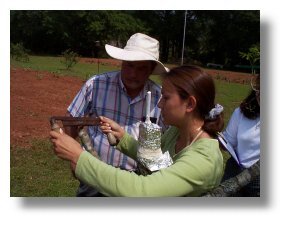
|
Bark Approach Graft Article and Images by Thomas H. Wilson |
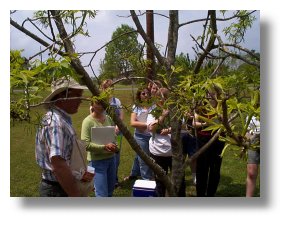
|
Mr. Amling explained that the Cheyenne pecan variety has proved unproductive in the southeast and that grafting quality fruiting stock would correct the problem. Amling brought scions of Creek and Amling varieties for grafting. The Amling variety comes from a chance seedling found in Dr. Amling's pecan orchard near Auburn, Alabama. |
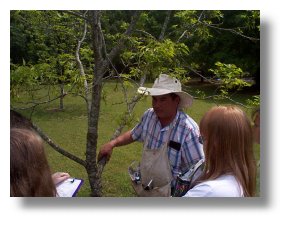
|
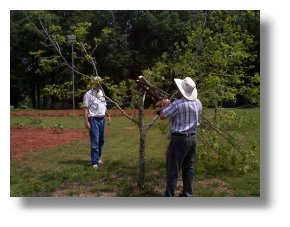
|
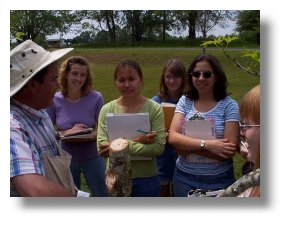
|
Mr. Amling demonstrated how to age the tree by counting growth rings and he pointed out the difference in bark and wood (Xylem). A short lesson in tree physiology helped students understand the biology of the bark approach grafting technique. |
| A draw knife was used to expose the bark tissue. It is important to
match the vascular cambium of the grafted scion to that of the pecan limb. A special heavy-bladed grafting knife was used to cut through the bark layer. The narrow strip of bark is peel back and the scion is inserted in the space. The vascular tissue of the scion and the limb are in contact and this allows for the graft to grow into the tree. |
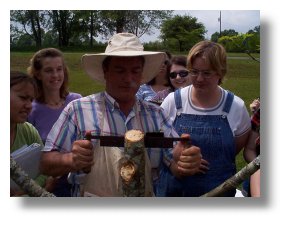
|
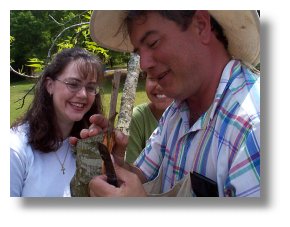
|
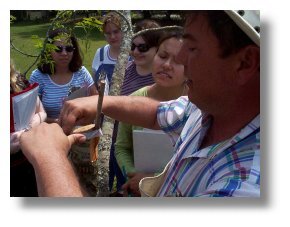
|
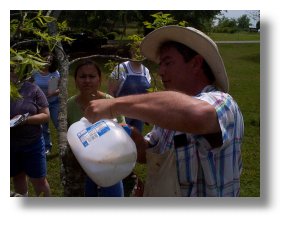
|
Mr. Amling used nylon tape to secure the graph to the limb. Lindane insecticide was poured onto the grafted area to protect the exposed tissue from pests. |
| A plastic bag was placed over the graft to maintain a high humidity around the exposed tissue. | 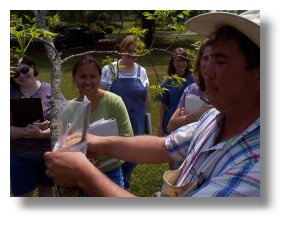
|
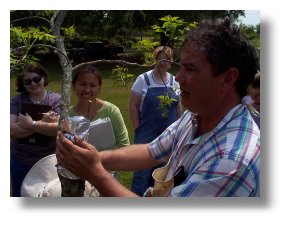
|
Aluminum foil was wrapped around the graft to shield the tissue from the light and to reflect heat. Tree tissues heal best in the dark. |
| The grafted scion was painted with white latex paint to protect against
water loss and to reflect heat. Bud-break on the grafted scions should occur within about 21 days. After the new stems grow about a foot in length, they will be secured with a stake to prevent wind damage. Amling predicted the grafted trees should start producing pecans in about three to five years. |
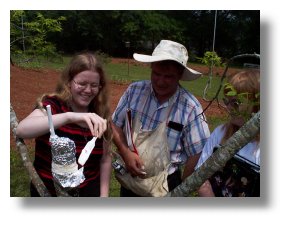
|